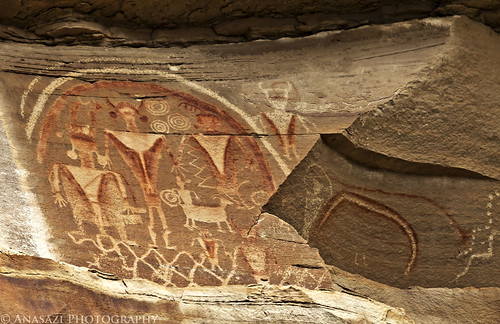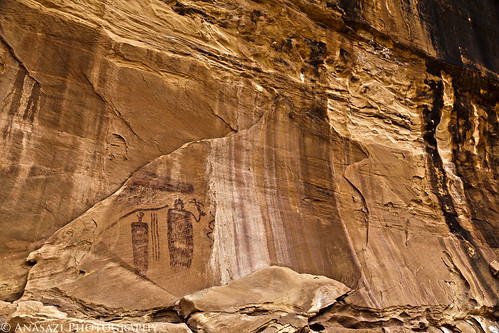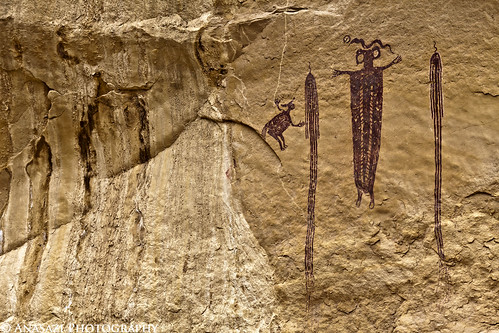Here’s part of an amazing Fremont pictograph and petroglyph (pictoglyph) panel located in the Ferron Box of the San Rafael Swell. The panel extends to the left, but that part of it was destroyed by a vandal who left behind a layer of plaster after a failed attempt to make a copy. It’s unfortunate, I would love to have seen the full panel intact.
1054 Supernova Pictograph
Some believe that this pictograph panel in Chaco Canyon represents the supernova that created the Crab Nebula on July 4, 1054. It was a nice hike to reach this rock art site on the way to Penasco Blanco.
On Vandalism of Rock Art
From Stone Chisel and Yucca Brush:
“A common experience for rock art aficionados is to arrive at a reportedly spectacular site only to discover that previous visitors painted or carved names, dates, modern symbols, slogans, and other remarks over or adjacent to the Native American images. Perpetrators of such graffiti actually claim to hold a certain kinship with rock art iconography. More poignantly, they consider rock art as the first recognizable manifestation of graffiti, referring to it as ‘archeograffiti.’. Based on this rationale they have no compunctions about adding their own signs to the existing paleoart.
However, while graffiti is intrinsically defined as illicit, the motivation for rock art was licit. That is, it was condoned, supported, and even encouraged by the social group to whom the art belonged. Rock art thus does not constitute archaeograffiti, and graffiti, whether witty or aesthetically pleasing, gang-related or politically motivated, is tantamount to vandalism.”
– Ekkehart Malotki & Donald E. Weaver Jr.



